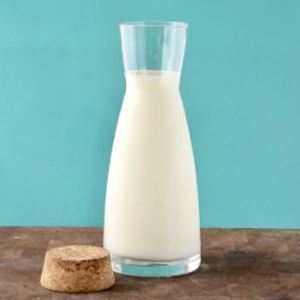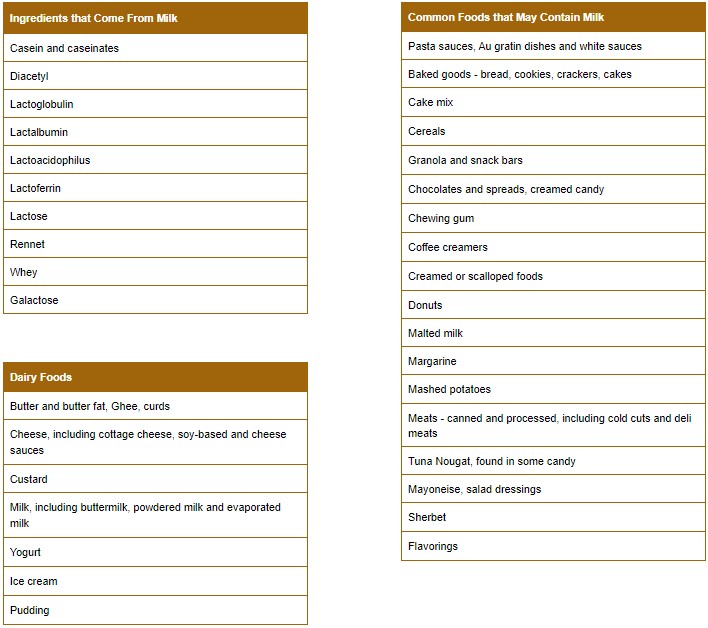|
Milk is one of eight foods that are responsible for 90 percent of childhood allergies. If your child is allergic, it's important to eat a milk-free diet to avoid an allergic reaction. Not only do you have to avoid milk and dairy products but all the hidden sources of milk. Many foods contain milk ingredients to help improve taste, texture, and nutrition. Learning to read labels and knowing which foods contain any sources of milk is a key part of eating a milk-free diet. Take a look at the lists below to know what to look for. |
 |
Foods and ingredients that contain milk:

Thanks to the Food Allergy Labeling and Consumer Protection Act (FALCPA), we have a little more help identifying hidden sources of milk. In the U.S., manufacturers must include the presence of milk or milk ingredients on the label in one of two ways:
- The word "milk" in parentheses after each milk-containing ingredient. For example, in the ingredients list you may see: whey protein (milk).
- The disclosure, "contains milk", at the end of the ingredient list.
Additionally, the following voluntary statements indicate that food may be contaminated with milk:
- "May contain milk"
- "Product produced on shared equipment with milk"
- "Made in a facility that also processes milk"

Once you become good at reading labels, it will be easy to detect which foods contain milk, ingredients derived from milk or that are potentially contaminated with milk. Make sure you check labels every time, even when buying the same products over and over as manufacturers change their ingredients from time to time. This is a great chance to take a look at the rest of the ingredients that make up the foods you and your family eat. Be conscious of what you put in your body!
